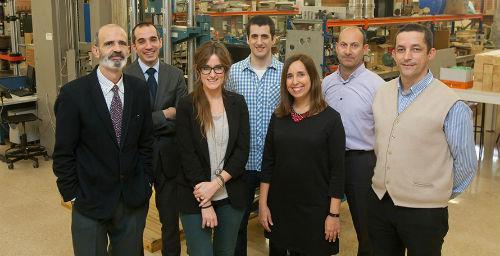 International. A group of researchers from the University of Navarra recently published a study on the benefits of mimicking the distribution of the vital functions of tuna to optimize work areas in an office building, with the aim of reducing the demand for heating.
International. A group of researchers from the University of Navarra recently published a study on the benefits of mimicking the distribution of the vital functions of tuna to optimize work areas in an office building, with the aim of reducing the demand for heating.
The article, published in the journal Building Simulation, proposes a zoning of workspaces that places meeting rooms and offices with a high occupancy in the center of the building, while the open work areas are in the outdoor area.
It is just what tuna achieves by placing its vital functions in the center of its body. This fish concentrates there its nervous, respiratory and digestive system, as well as the set of red muscles that give it that particular reddish tone and that ensure that the heat generated is protected inside. Thus it can survive in icy waters -up to 4 ºC- where other animals of its size would not maintain such a high activity, explains the professor of the Department of Environmental Biology, Rafael Miranda.
Amaia Zuazua, architect and researcher of the project at the School of Architecture of the academic center, adds that the main novelty of this study is to use nature as a source of learning to improve the energy management of a building. And the results, he points out, have left no room for doubt: The data indicate a reduction in heating demand in all cases. In particular, the models indicate that the colder the climate, the more the need for heating is reduced by applying the 'tuna building' model.
According to the researchers, the most interesting thing about this proposal is that it hardly requires expenses, since it is not necessary to change facades or reform large facilities, you just have to raise the interior distributions in another way.
For their study, architects and biologists from the University of Navarra used as a model the Gamesa building in Pamplona, whose central distribution would resemble the anatomy of tuna. Simulations with cities such as Berlin, Oslo or Pamplona indicate an average reduction in demand of 5%.


























Leave your comment